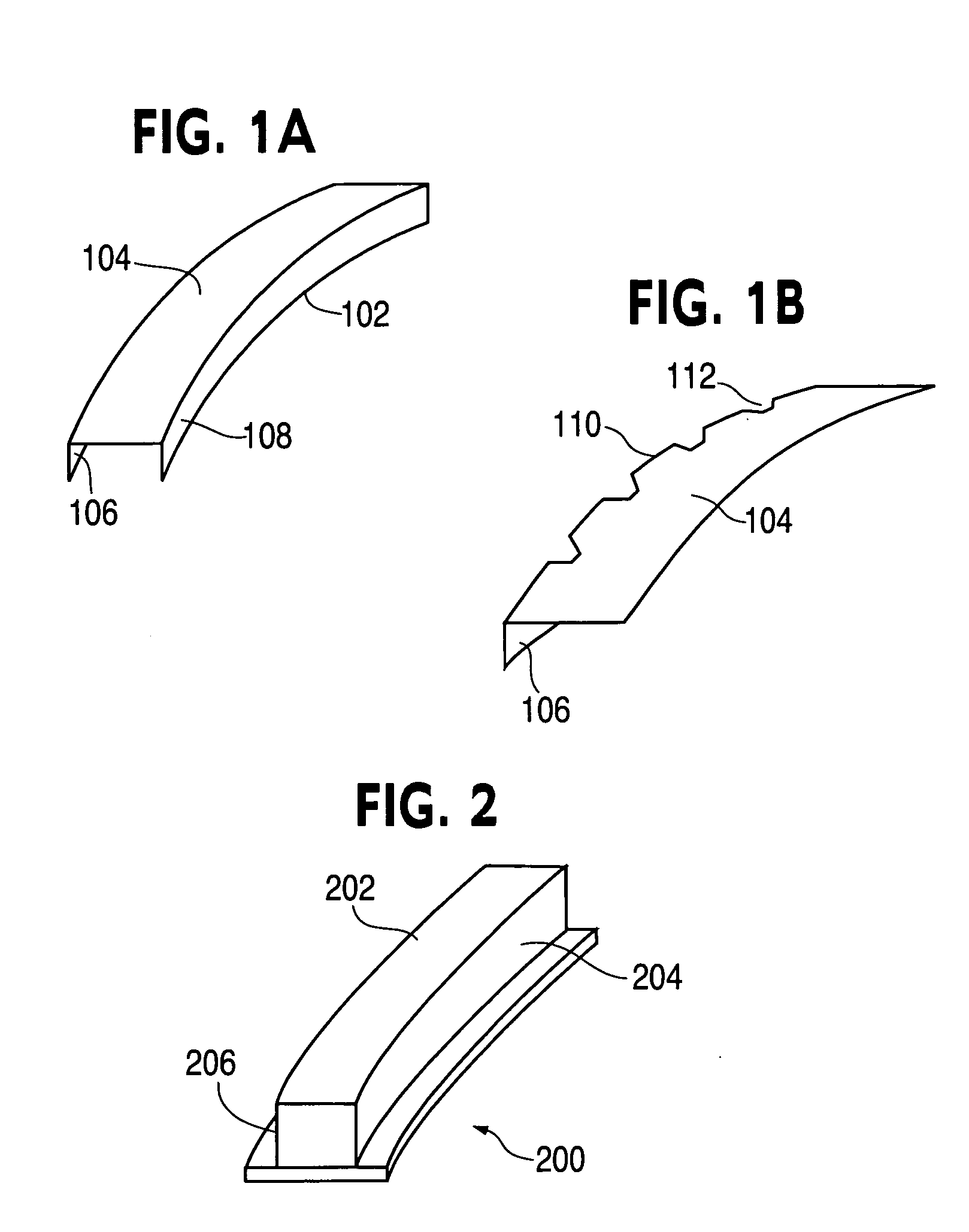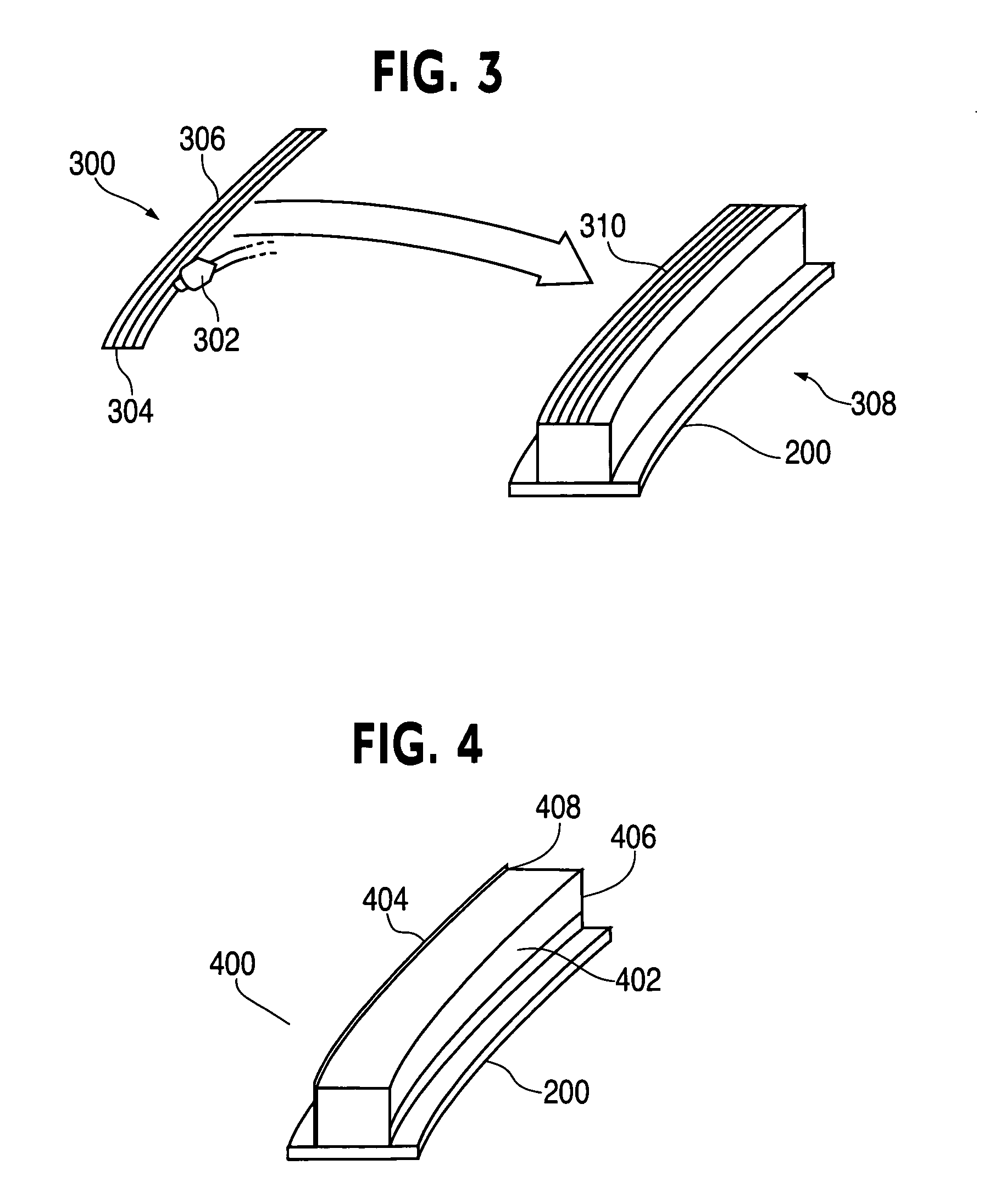Method of manufacturing curved composite structural elements
a composite structural element and curved technology, applied in the field of composite structures, can solve the problems of composite material design and unidirectional fibers not following the contour of the structural member
- Summary
- Abstract
- Description
- Claims
- Application Information
AI Technical Summary
Benefits of technology
Problems solved by technology
Method used
Image
Examples
Embodiment Construction
[0024] An embodiment in accordance with the present disclosure provides a method of manufacturing curved composite structural elements. The method can include fabricating a composite curved web ply using an advanced fiber placement (AFP) machine such that the fiber orientation of the composite material is substantially aligned with the curvature of the structural element. The web ply can then be trimmed and laid up on a manufacturing tool having a curved surface to match the shape of the web ply.
[0025] The method also can include laying up a diagonal ply of composite fabric with the fabric fibers oriented at 45 degrees from a tangent of the centerline of the curved surface. The method further can include laying up a cross ply composed of composite tape segments with the tape fibers oriented at a right angle to the tangent of the centerline of the curved surface. In addition, one or both edges of the diagonal ply and the cross ply may be folded over a side of the manufacturing tool ...
PUM
| Property | Measurement | Unit |
|---|---|---|
| widths | aaaaa | aaaaa |
| widths | aaaaa | aaaaa |
| angle | aaaaa | aaaaa |
Abstract
Description
Claims
Application Information
 Login to View More
Login to View More - R&D
- Intellectual Property
- Life Sciences
- Materials
- Tech Scout
- Unparalleled Data Quality
- Higher Quality Content
- 60% Fewer Hallucinations
Browse by: Latest US Patents, China's latest patents, Technical Efficacy Thesaurus, Application Domain, Technology Topic, Popular Technical Reports.
© 2025 PatSnap. All rights reserved.Legal|Privacy policy|Modern Slavery Act Transparency Statement|Sitemap|About US| Contact US: help@patsnap.com



